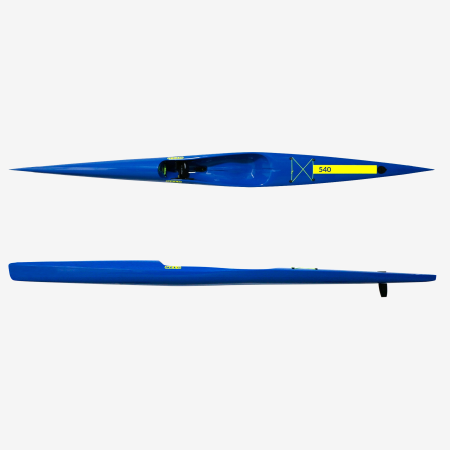Product Details
Boat Details
STABILITY: 8
BOAT SIZE: 6.35m x 0.41m
CONSTRUCTION:
SCS
WWR
Athlete Weight:
Up to 120kg
About the Boat
The name Sagres comes from a historical landmark in navigation, where cartographers, astronomers, mathematicians, sailors, and experienced shipbuilders founded a community of knowledge and expertise in a small village in southern Portugal, revolutionizing the history of maritime navigation. This place became known as the School of Sagres. The goal was to achieve maximum performance in flatwater conditions.
The starting point was to reduce the rocker (banana effect) of the renowned and champion Excel S hull. This modified hull was incorporated into the deck of the Huracan, which features a very comfortable and protected cockpit. The harmonization of the design brought about a volume that also revealed it as an option for downwind paddling. This model was designed by Diego Vale Designs alongside experienced athletes, and after on water tests, they provided feedback that the goal of having an incredible performance canoe experience had been achieved.
BOAT DIMENSIONS:
CAPACITY: Up to 120kg
LENGTH: 6.35m
WIDTH: 0.41m
HEIGHT: 0.37m
CUSTOMIZATION No ideas for your new boat? No problem! In addition to our color schemes you can contact Paddle Sports Design, our partner for a top personal design touch.
How to Setup your Nelo Boat
The Perfect trim
As with any high-performance machine, there is an ideal configuration where our boats are at peak efficiency, specifically with the angle of attack (pitch). This guide will help you trim your boat in order to be at that perfect angle when at speed.
- Check the table and images below to find the right measures for your boat size. That’s how you find the optimum static rending.
- Using a marker trace a small straight line, according to the right measure indicated in the table, on the bow for the static line;
- With the boat stopped, adjust your seat and footrest position so that the static line is levelled with the waterline. At that point is the Optimum Static Rending.
The measures we provide are for the median weight for each boat size (80 kg on an L, for example). So if you are on the limits of the boat’s weight range, the line will be over or under water, but the most important is that the static line is still levelled with the waterline.
DISCLAIMER
These ideal trims were the result of real-world testing and CFD analysis, under optimal conditions: flat water, constant speed, no wind, and average water temperature. Meaning that these results may not apply to other scenarios.
Viewers Also Liked
Follow our Social Media!
Subscribe our newsletter
- TEL :+351 252 618 962 (10-11am)
- MAIL : nelo@nelo.eu















